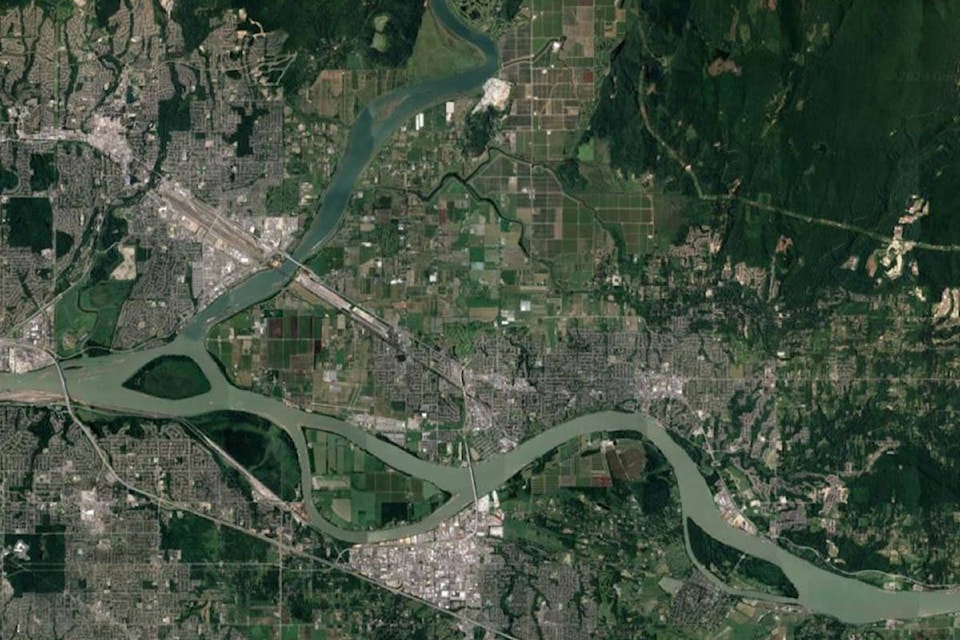Higher-than-normal snowpacks have cities on alert about the potential risk of flooding in Fraser Valley communities, but officials say it’s not the time to panic.
City of Pitt Meadows emergency program co-ordinator Barbara Morgan says snowpacks across the province are at 130 per cent, with the Caribou Lake snowpack at 147 per cent, “which are numbers we’ve never seen.”
Morgan said the weather is a determining factor on whether or not Pitt Meadows will see some flooding.
Officials are hoping for a healthy mix of rain and sun. Too much of either could potentially melt the snowpack too fast, flooding waterways.
“It’s all weather dependent, and it’s important that you get that in there,” Morgan said. “It’s all dependent. To have a high snowpack is neither here nor there, except for if we were to get any weather pattern for an extended period of time. We don’t want lots of rain, we don’t want lots of sun. We want a little bit of sun and a little bit of rain, that’s perfect.”
SEE ALSO: Pitt Meadows gets some help for flood plan
Morgan said the current situation does not call for widespread stress about potential flooding, adding that the city is closely monitoring the situation.
“When it becomes a point of concern we will act accordingly,” Morgan said. “In the background, we’re working and doing some planning around potentially what are some of the things we need to put in place to support our citizens.”
Approximately 85 per cent of Pitt Meadows is in the floodplain, however, Morgan said the city’s diking system is very good and is confident the dike is high enough to contain the water.
“We have some concern about it, but that’s not our biggest concern,” Morgan said, adding that a dike breach is a primary concern.
“With high water, we may see it localized here and there but nothing too… significant.”
RELATED: Higher-than-normal snowpacks mean parts of B.C. at risk of flooding
Morgan said the message to the community is that if there was flooding, residents could be without power.
“They may not be affected by the water, but the way that hydro works is that it shuts down… if one house on that grid is affected the whole grid gets shut down,” she said. “The water may not affect you, but your lack of power (could). People need to think about alternative ways of cooking.”
Morgan noted that Pitt Meadows has information on its website regarding emergency preparedness and an emergency kit check-list. That information can be found at https://tinyurl.com/ya43nxea
Jonathan Boyd, a hydrologist with the River Forecast Centre, told Black Press Media last month the combined index for all upstream snowpacks is the highest it has been since 1999. Records don’t exist before that point.
He said it’s not the time to panic.
“There’s lots of variables and in order for a record flood to happen, you have to have everything happen in the worse case scenario,” he said. “But right now, we do know that the snowpack is high enough that it does have that capacity to be there. Everybody should be aware the risk is there.”
Boyd echoed Morgan in that a perfect storm of climate and weather conditions is a determining factor of high flows for the lower Fraser Valley.
May 9, the provincial government issued a news release urging residents to prepare for spring flood season.
The release noted that B.C.’s most severe floods usually occur in spring and early summer when melting snow and rain combine. Floods can also be caused by storm surges, ice jams, or damage to structures like dikes and dams.
The province provided a number of things residents can do, including moving assets to higher ground, prepare a “grab-and-go” bag, recognize signs of danger, and listen to local officials if asked to evacuate.
The provincial Flood Preparedness Guide is available at www.preparebc.ca/floods
